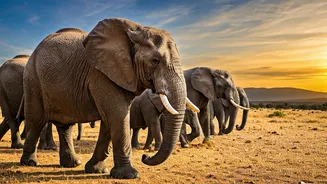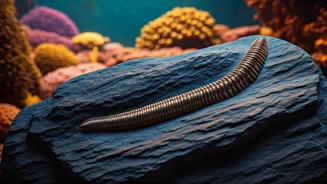The Blue Whale
The undisputed champion of the animal kingdom, the blue whale holds the title of the largest animal to have ever lived, and it still does. These marine
giants can grow to astonishing lengths, reaching up to 30 meters (98 feet) long and weighing up to 200 tons. Their massive size allows them to consume incredible amounts of krill, tiny crustaceans that fuel their immense bodies. Blue whales are found in oceans worldwide, and their existence continues to fascinate scientists and nature enthusiasts. They are known for their complex songs, which can travel vast distances underwater. Despite their size, these gentle giants face threats from ship strikes, entanglement in fishing gear, and climate change, making their conservation crucial for the health of our oceans.
The Sauropods
These colossal dinosaurs roamed the Earth during the Mesozoic Era, showcasing the power of nature's design. Diplodocus, Brachiosaurus, and Argentinosaurus represent some of the most famous examples. They were characterized by their incredibly long necks and tails, which allowed them to reach high into the trees for food. Their immense size was a defense mechanism against predators. Argentinosaurus, for example, is estimated to have reached lengths of 30-35 meters (98-115 feet) and weighed up to 100 tons, making it one of the largest land animals ever. Their footprints and fossil remains are found in various parts of the world, providing insight into their lifestyle and the ecosystems they inhabited. The study of sauropods has expanded our understanding of prehistoric life.
The Spinosaurus
This intriguing dinosaur, the Spinosaurus, is believed to have been a semi-aquatic predator that lived during the Cretaceous period in what is now North Africa. What sets Spinosaurus apart is its unique spinal structure. Spinosaurus' spines supported a massive sail-like structure on its back, potentially used for display, thermoregulation, or both. They were estimated to reach lengths of 12-18 meters (39-59 feet) and weigh up to 20 tons. Fossils suggest that Spinosaurus had a long, crocodile-like snout and powerful jaws ideal for catching fish. Its semi-aquatic lifestyle, along with its massive size and the characteristic sail, makes it an exceptional example of dinosaur evolution, prompting a reevaluation of dinosaur classification.
The African Bush Elephant
The African bush elephant, while not as large as some prehistoric giants, still holds the distinction of being the largest land animal alive today. Mature males, or bulls, can stand up to 3.3 meters (10.8 feet) tall at the shoulder and weigh up to 6 tons. These elephants live in social groups led by matriarchs, and they roam across the African savannahs, impacting the landscape and influencing their environment. They have a lifespan that can reach up to 70 years. These intelligent animals are known for their intricate social structures, communication through low-frequency rumbles, and the essential role they play in seed dispersal and maintaining biodiversity. They are currently threatened by poaching for their ivory tusks and habitat loss due to human development, which is why conservation is critical.
The Fin Whale
Second to the blue whale in size, the fin whale is one of the largest animals inhabiting our oceans. Measuring up to 26 meters (85 feet) in length and weighing up to 74 tons, it is the second-largest whale species. Found in oceans across the globe, the fin whale is a sleek and streamlined animal adapted for efficient swimming. Known for its distinct asymmetrical coloration, with a gray-brown body and lighter undersides, it has a long, slender body shape. These whales feed primarily on krill and small fish, using baleen plates to filter food from the water. Fin whales, like other large whales, face threats from ship strikes, entanglement in fishing gear, and noise pollution in the ocean.






